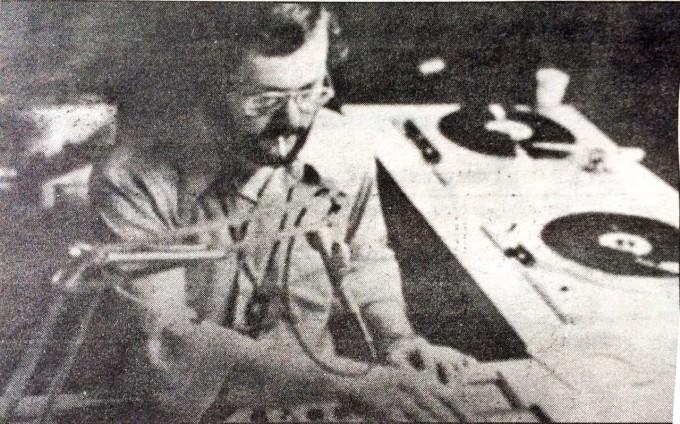By Steve Gold
Last Saturday CKLN celebrated its twentieth anniversary. Twenty years is an impressive landmark — too bad the festivities were five years too late.
The fact is, CKLN first went to air, albeit with only four watts of power, on Jan. 9, 1978. For those of you doing the math at home, that’s 25 years ago, not 20. The station’s original name was CRFM, but the name changed to CKLN in late ’78. Back in the day the station was completely student managed, financed, and staffed, a far cry from the well-established community radio station it is today.
CKLN’s staff consisted mostly of radio and television arts students. Patrick Nagle, a 1979 RTA graduate, was CKLN’s station manager during its inaugural year. According to Nagle, some of his staff saw the station as opportunity to practice their future craft first-hand, while others saw it as an opportunity to goof off from schoolwork.
“It was really a hodgepodge of people,” recalls Nagle, 45, who admits he was a workaholic at CKLN and often spent more time there than in the classroom. Today, Nagle is the area manager for CBC Radio North in Nunavut. His stations broadcast to 40 communities in Nunavut and northern Quebec. Seventy per cent of the programming is in Inuktitut — an Inuit language.
In 1978, CKLN ran on a relatively modest $21,000 annual budget. The station broadcasted on Rogers Cable 96.6 and aired primarily in student lounges across Ryerson’s campus. Although the station’s equipment met professional industry standards, Nagle says much of it came from scrap heap.
“It was all borrowed, hand-me-down stuff,” says Nagle. “We’d go begging the RTA department or the CBC when they were throwing stuff out.”
To play music, CKLN relied on old-style broadcast turntables from the early 50s and reel-to-reel tape machines. Volunteer electrical engineering students maintained the equipment. A handful of the volunteer engineers later went on to work in radio because of their experience at CKLN.
According to Nagle, CKLN’s on-air talent was a lot different than mainstream Top 40 Disc Jockeys. In fact, CKLN DJs adamantly refused to play anything heard on Casey Casum’s countdown. The station played jazz, classical, reggae, and live music from Toronto clubs.
“There was a lot of alternative music people weren’t hearing,” says Nagle. CKLN programmed its schedule with that end in mind. The station also provided exposure for struggling local artists.
CKLN aired live performances of a Yuk Yuk’s comedy group once a week in the basement of a Church Street community centre. The station was producing quality radio for Ryerson students, but Nagle and his staff felt the station needed a bigger platform. According to Nagle, finding such a platform meant obtaining a spot on the FM dial.
“CKLN had a long way to go before it became a serious radio operation,” says Nagle. “A small, little practice radio [station] for a few RTA students was not where we wanted the station to go. I think we saw the potential for what CKLN has become today.”
The trouble was getting others outside of the CKLN office to see the potential.
During the late ‘70s, many campuses in Ontario were vying for an FM license, but the Canadian Radio-Television and Telecommunications Commission was hesitant to designate an FM frequency to a campus station. Nagle spent hours writing letter and drafting policy proposals for the CRTC, assuring them CKLN was “not just kids trying to play radio.”
But many of the officials CKLN needed to go to to attain the ability to reach listeners beyond the Ryerson campus were skeptical, says Nagle.
Some officials felt the station’s desire to expand beyond Ryerson’s campus was merely an attempt by university students to gain exposure and better their job prospects.
“[Future employment] was the furthest thing from our minds,” says Nagle. “We saw the potential for a community-based radio station, and we were going to go there.”
CKLN also received criticism from Ryerson students and faculty. They felt expanding CKLN would deprive Ryerson students of their own radio station. In hindsight, Nagle says the transition from a student station to a community station did take power and airtime away from Ryerson students, but the overall benefit of obtaining an FM frequency outweighed the costs.
“[We were] trying to make the transition between practice radio and radio that was really going to do something for the students that wanted to get involved. [Expanding CKLN provided a] bigger, broader, more interesting experience.”
Despite the numerous obstacles, CKLN finally earned a spot on the FM dial at 88.1 in 1983, which is why the station celebrated its twentieth year anniversary at the Bambu-by-the-Lake last Saturday. Today, CKLN proudly calls itself the “voice of the underground.” According to Nagle, the station has become the vital community radio station he and his staff envisioned 25 years ago.











Leave a Reply